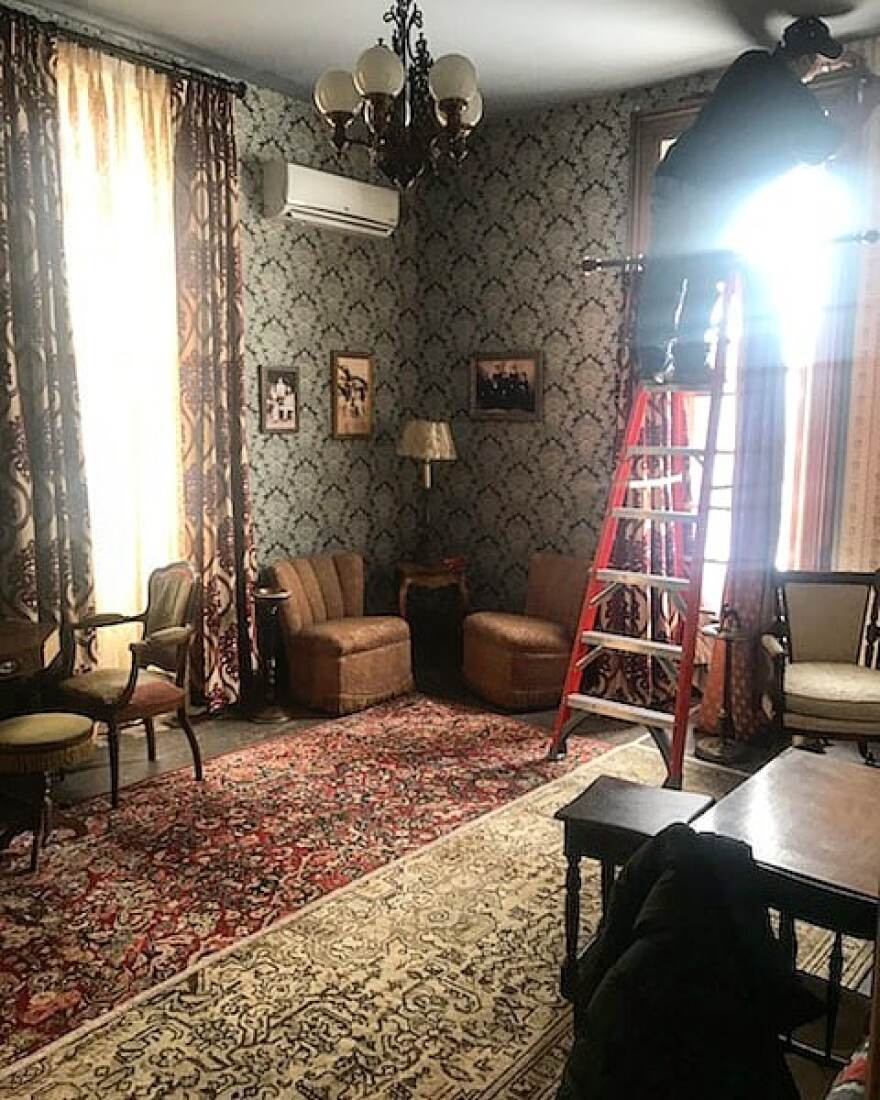If you watched the mostly black-and-white Episode 9 of FX’s “Fargo,” you might have recognized a historic Italianate farmhouse where some of the action was set.
In the show, the Duncan Manor mansion on Towanda Barnes Road in Towanda was portrayed as a boarding house run by two sisters that didn't get along. So all of the rooms used for filming were divided into two.
This episode was reminiscent of “The Wizard of Oz,” hence the title, "East or West." The two sisters represented the Good Witch and the Bad Witch.
“It was pretty interesting. They did a lot of prep. Basically we were out of the house for about three weeks while they kind of redid everything and got it to their standards,” said Duncan Manor owner Dave Howell.
“Fargo” filmed at the mansion for about four days.

There were two rooms seen in the episode. The first is the parlor that acted as the lobby and check-in. The second room is the living room, and it seemed to be a room where guests could just relax. All the walls were wallpapered in two different styles, split down the middle, as well as the furniture and the rugs.
“Oh, the rugs, that was torture to see them cut in half,” said Randi Howell, Dave’s wife, in a Facebook post.
A lot of the show was shot in central Illinois. In fact, Pontiac and Flanagan also were filming locations in the fourth season. Pontiac Mayor Bill Alvey said there were about 150 cast and crew who stayed in Pontiac hotels. Filming in Pontiac took place on Mill Street, primarily in the 300 block. Howell said a bus of about 30 people unloaded at Duncan Manor to film in Towanda.
“They showed up with about three people the first time and then five people, and then they set up with 10 people and then they showed up with about 30 people,” said Dave Howell. “That was just all for the scouting process. Then, they pass that on to their other creative departments. There were a lot of people involved. It was a pretty big production really.”
The Howells offered their pole barn as storage for the production crew.
“So they partnered with a production company out of Chicago, and a location scout approached us. She approached us and it kind of went from there,” said Dave Howell. “They were looking for a boarding house in the middle of nowhere in Kansas.”
The mansion dates back to the 1860s. In 1864, William Duncan purchased 300 acres outside of Towanda and called the land Towanda Meadows. In 1866, Duncan Manor was built on a hill overlooking the railroad tracks, amid the prairie that is Towanda Meadows.
Duncan Manor has passed through many hands, but for the majority of its existence it has acted as a rental property and has not received the love and attention it deserves. Nearly 150 years later, the Howell family moved in July 6, 2014. Also 2014 was the “Fargo's” first season, a creative cousin of the Coen Brothers film company.
“It’s cool they are using local landmarks,” said Dave Howell. “These guys were super professional with everything.”
This is the first time Duncan Manor was used for filming, and in the future Howell said they would be open to discussing more productions being filming there.
“It just depends on the situation, but it is our home and we do live in it. It has to be the right situation and people,” said Dave Howell. “We've done a couple like short music videos, some photography, different things like that. But this is the only like filming production has actually gone out of here, especially on that kind of a scale.”
Residing in the home are Dave and Randi Howell, their son and two cats.
When the Howell family first moved in, the manor had no electricity, plumbing, water or HVAC. The roof was leaking, walls were crumbling and porches rotting.
“Not all of this has changed, but we are making progress,” said Dave Howell. “We're in the process right now of trying to put in some ADA accessible restrooms outside. So we can actually be open to the public more on a regular basis up here. So we can actually share with the community a little bit. Other people can enjoy it as well.”
There's no subscription fee to listen or read our stories. Everyone can access this essential public service thanks to community support. Donate now, and help fund your public media.


